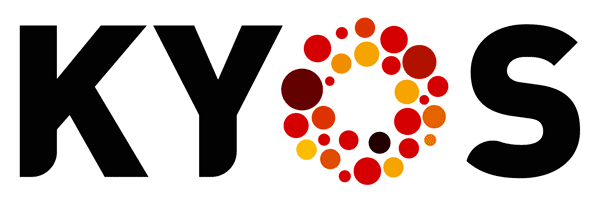White paper: Benefits of outsourcing energy analytics
White paper
KYOS white paper about outsourcing energy analytics
Benefits of outsourcing energy analytics
 In the years 2000 energy companies built up large trading teams, with even larger teams for back office, middle office, portfolio management and risk management. Now that the times have changed, energy companies are forced to scale down rapidly. In this white paper publication, we describe how energy companies can reduce costs while improving their analytics and decisions. We advocate a move from expensive in-house developments to external solution providers for energy analytics. This will help analysts to spend more time on actual analysis instead of operational and development tasks.
In the years 2000 energy companies built up large trading teams, with even larger teams for back office, middle office, portfolio management and risk management. Now that the times have changed, energy companies are forced to scale down rapidly. In this white paper publication, we describe how energy companies can reduce costs while improving their analytics and decisions. We advocate a move from expensive in-house developments to external solution providers for energy analytics. This will help analysts to spend more time on actual analysis instead of operational and development tasks.
Download the paper
Click here to download the white paper, or read the full text here:
Lean and mean: benefits of outsourcing energy analytics
Traditional energy companies are under strong financial pressure. They face low or negative margins in sales, in gas midstream activities, and power production. They have to write off millions or billions on their assets. The prices for energy feedstock (coal, gas, oil) continue to fall, making it difficult to generate profits in production, sales and trading. And at the same time, new market players show up with new business models, exploiting innovations in internet technology, in small scale power generation, in green energy, and in marketing and sales. This poisonous mix of unfriendly market conditions sharply contrasts with the high profits in the years 2000. The economy was booming, incumbents still benefited from loyal customers and government support in their home markets, gas markets were volatile and exhibited large price spreads, spark and dark spreads for power plants were high, and power producers made large windfall profits on the freely allocated CO2 emission rights.
In the years 2000 energy companies built up large trading teams, with even larger teams for back office, middle office, portfolio management and risk management. Now that the times have changed, energy companies are forced to scale down rapidly.
Traditional energy companies try to transform and become more like the newcomers, who operate with a limited work force and limited capital. It’s a standard business transformation process. One of the lessons learnt from the newcomers is to stay lean and mean. This means an energy company only performs a limited number of key activities in-house, and outsources the rest to service providers who offer the best value for money. This also applies to IT systems. For example, there are virtually no energy companies who develop their own ERP or billing software. And there are only very few left who maintain in-house energy trade and risk management systems; instead, they have professional systems from companies like Open Link, Triple Point, Brady, Allegro and a wide range of other vendors with varying capabilities and cost structures. But there are still surprisingly many companies who let their own people develop tools and software for the analytics required in valuation, portfolio and risk management. Relatively large teams of analysts, quants and software developers support the sales, production and trading business with in-house developed trading and optimization tools.
But is it really the core competence of energy companies to build software and tools for forward curve building, for asset optimization, for hedge optimization, for load and price forecasting, for valuation, for risk measurement and for other energy analytics? Can your internal people really provide better value for money than external specialists in these areas?
There are many reasons why energy companies tend develop energy analytics in-house. Most importantly, developments often start small and it might seem that an internal quant can make a fine model in-house. To develop ideas into a prototype often works well. It stimulates the understanding of what analytics are needed and how it should work.
A first development may be built easily, but the cost to bring it to an operational level and adjust it to changing market conditions is a time-consuming activity. Furthermore, in-house developments are often poorly documented, fragmented across the company and a nightmare to maintain. Knowledge sharing and documenting is not what people tend to like most, especially quant people. It is not in their interest either. The best way to keep your job is to make yourself important and indispensable.
It is not in the interest of the analysts and quants to provide access to their work. So, don’t blame them for advocating in-house developments.
It is important for energy companies to define more clearly what to expect from (quant) analysts. Currently, analysts spend a lot of time on operational tasks, very often using spreadsheets. And they spend a lot of time developing and maintaining their own tools. But analysts are really more qualified and effective in providing access to specific market information interpreting it to take better decisions. Analysts can help to explore the right information, process that information accurately, and interpret the results from a range of sources and tools. Similar to the airline industry, you don’t build the plane yourself, but need a professional crew to fly it. So, let your professionals focus on the usage, not on the building of energy analytics.
Outsourcing of energy analytics will allow in-house analysts to spend more time on actual analysis instead of operational and development tasks.
What should senior management do? How can companies cut costs in energy analytics while at the same time improving the quality? The following three steps capture the essence of a potential change management process:
1. Perform an investigation of all analytics which the company requires. Categorise them into a few main groups (e.g. valuation, risk management, optimization). In this step, avoid the pitfall to believe that the company’s analytical operations are unique and can only be understood by your own people. Standard solutions might very well do the job, potentially with a number of customizations.
2. Explore which in-house departments or teams are involved in these activities. Explore which external service and software providers offer these solutions too. Start a selection process, inviting both internal and external solution providers. Depending on the company’s budget and size of operations, ask independent consultants to run this selection process, mainly to ensure an open mind to alternatives.
3. Depending on the outcome of step 2, start the appropriate change process. This could mean that internal teams provide the required analytical software. Or it means that the solutions are purchased externally. In both cases, it is equally important to monitor the operations in order to ensure an overall low cost level, adequate knowledge sharing, timely maintenance and support, as well as keeping up with new market developments.
In short, we advise energy companies to adopt a different approach to energy analytics. They can benefit from the well-developed industry of solution providers in this area. Involving them in selected parts of the company’s operations, will provide significant cost savings and help to survive in an increasingly competitive environment.
